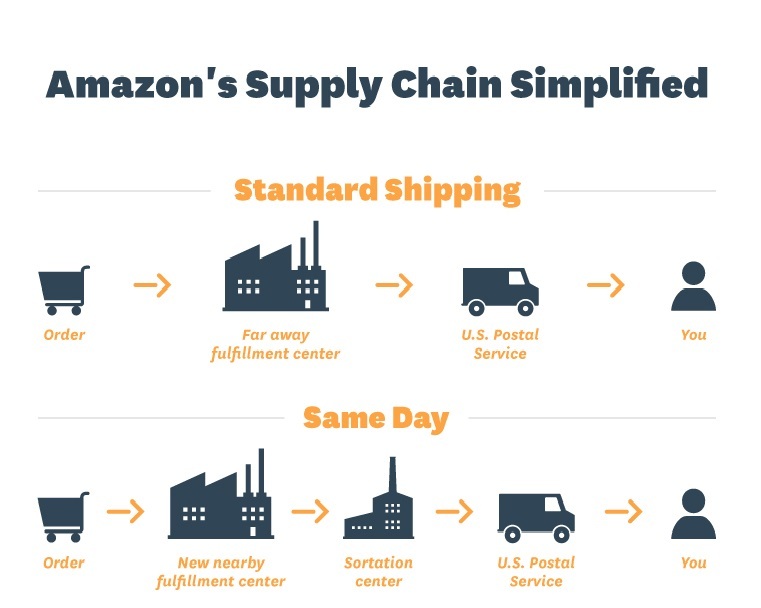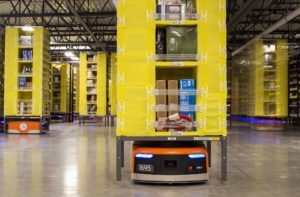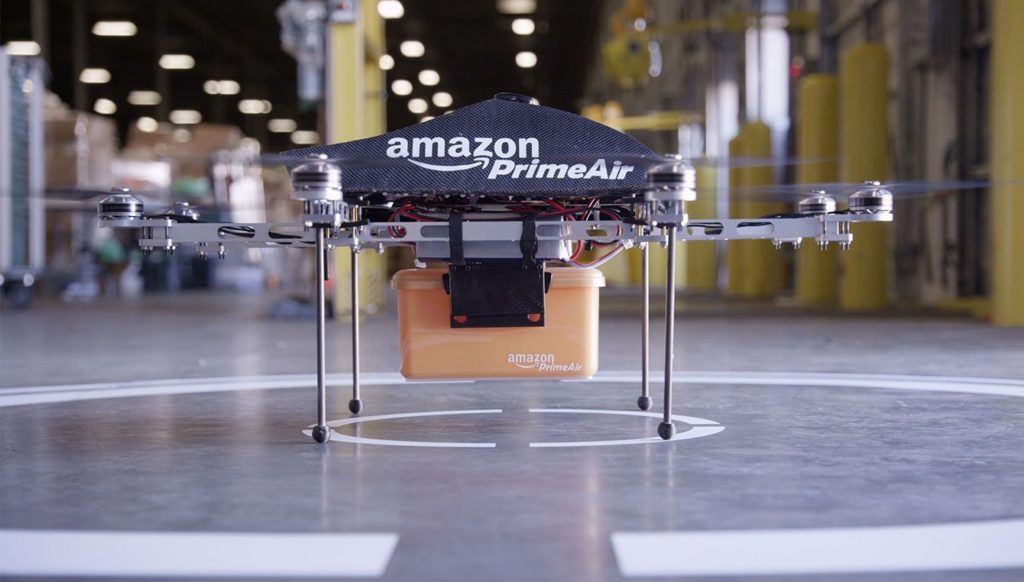Amazon’s rapid supply chain innovation: Battling with consumer’s evolving needs!

In the current tech savvy world, Amazon has been the clear winner against online and offline retailers through disruptive advancements in digitization of its Supply Chain. However, it might be important to realize the implications of rapid innovation and understand where the real war is.
Since couple of decades, Amazon has emerged as the flag-bearer of supply chain advancement, defining an ecosystem for adoption of Supply Chain 4.0. However, Amazon isn’t the only force disrupting retail. Consumer preferences have been evolving rapidly. Today, more and more people want to shop online, want a broad assortment of customized products but at competitive prices with instant and free delivery. [1]
This is evident with the US same day delivery market expected to grow from $0.62 billion in  2015 to $4.0 billion in 2018 at a compounded annual growth rate of 76% [2]. With the definition of convenience and service continuously evolving, Amazon has had to innovate relentlessly in its supply chain, but can it win against consumer needs?
2015 to $4.0 billion in 2018 at a compounded annual growth rate of 76% [2]. With the definition of convenience and service continuously evolving, Amazon has had to innovate relentlessly in its supply chain, but can it win against consumer needs?
“The Amazon Effect” [3] on Supply chain
Amazon’s digital marketplace not only disrupted the retail business model but also adopted key elements of Supply Chain 4.0[4] such as integrated planning and execution, logistics visibility, smart warehousing and prescriptive analytics.
Amazon’s Oracle based ERP system automated order matching to nearest distribution center, thus expediting the order fulfillment process and reducing distribution mistakes. From the beginning, Amazon sought to create speedy delivery as a competitive advantage and invested accordingly in more than 70 fulfillment centers in the US alone [5], partnering with sellers through its Fulfillment by Amazon (FBA) Model. This kept accelerating delivery times from 48 hours to next day and now couple of hours. Big Data Analytics recorded customer purchasing patterns to make personalized recommendations and predictive supply chain models preempted sales and expedite delivery.
However, Amazon’s big futuristic push to embrace smart manufacturing was investing heavily in automation of fulfillment centers. In 2012, Amazon acquired robotic and automated warehouse solution provider, Kiva Systems [6] and placed mobile robots in its warehouse that work on object recognition and depth sensing technologies to automate order picking and packing process. Even with the implications on the cost structure, this move made the warehouses more productive and fulfill precise delivery dates in their Prime Model. 
Given the extent of these advancements, it is fair to say that other online retailers have had to play catch up in adopting similar digitization elements in their Supply Chain Models.
Building Next Level Customer Experience: Integrating technology
In 2015, Amazon brought the one-click shopping experience to life by creating dash buttons. These small thumb sized devices let consumers buy common household products (such as detergent, toilet paper) by merely clicking a physical button. The goal as per Amazon is to “make shopping disappear” [7] and make buying products as easy as thinking about them. As of April 2017, Amazon received around 5760 orders daily through dash and had more than 300 buttons for different products. [7]
With an intent to disrupt physical retail, Amazon opened its prototype Amazon Go store in Seattle in December, 2016. This revolutionary concept combines checkout free shopping experience with just walk out technology and automated payments by utilizing same technologies used in self-driving cars: computer vision, sensor fusion and deep learning [8]. 
Balancing the future and Long-term play
Given its rapid pace of innovation, Amazon should choose carefully between ambitious, over the top and customer relevant, value driving innovations. In 2013, Amazon launched a demo of a drone based delivery system through which customers can receive their packages via drones within 30 minutes or less [9]. However, there is a risk of this concept being considered just a publicity stunt. Can the marginal benefit of delivery time reduction by few hours justify the cost of last mile distribution particularly with small value orders?
With Amazon ahead of other eCommerce and conventional retailers in Supply Chain capability, its true competition remains the ever-evolving consumer preferences. Amazon has created a customer convenience innovation cycle and may be guilty of spoiling consumers for service, but it needs to address consumer preferences on a sustainable cost basis. A common trap would be to focus on providing ornamental experiences (such as facial recognition while shopping [10]) while neglecting cost saving interventions in logistics and fulfillment. Ultimately, low prices and broad assortments drove consumers to online retail and futuristic purchase experiences, though aspirational, might not be enough to retain price sensitive consumers. Looking ahead, Amazon should also further invest in integrating logistics capability and unifying its massive supply chain across countries to achieve greater scale and efficiency advantages.
Questions to consider
With massive disruptions, the Amazon effect on supply chain is real but can Amazon continue the pace of effective innovations while not compromising profitability and long-term value? Will the consumers respond favorably to futuristic shopping experiences or are those efforts misdirected? Is Amazon winning this self-created battle?
As the cliché goes, only time (and in this case, consumer) will tell!
Word Count : 794
References:
- Jane Edmondson, “ It’s Not Just Amazon: The Mass Disruption Of Retail”, Seeking Alpha, June 21, 2017, https://seekingalpha.com/article/4083034-just-amazon-mass-disruption-retail?page=2, accessed November 2017.
- Puneet Sikka, “Amazon Is Expanding Prime Now Service to New Metro Areas”, Market Realist, June 1, 2016, http://marketrealist.com/2016/06/amazon-expanding-prime-now-service-new-metro-areas/, accessed November 2017.
- Rosemary Coates, “The Amazon Effect and the Global Supply Chain”, Supply Chain Management Review, May 30, 2017, http://www.scmr.com/article/the_amazon_effect_and_the_global_supply_chain, accessed October 2017.
- Knut Alicke, Daniel Rexhausen, and Andreas Seyfert, “Supply Chain 4.0 in consumer goods”, Mckinsey & Company, April 2017, https://www.mckinsey.com/industries/consumer-packaged-goods/our-insights/supply-chain-4-0-in-consumer-goods, accessed November 2017.
- Amazon Website, https://www.amazon.com/p/feature/98dnmkwyztuv8ur, accessed November 2017.
- Sam Shead, “Amazon now has 45,000 robots in its warehouses”, Business Insider, Jan 3, 2017, http://www.businessinsider.com/amazons-robot-army-has-grown-by-50-2017-1, accessed November 2017.
- Leena Rao, “Two Years After Launching, Amazon Dash Shows Promise”, Fortune, April 25, 2017, http://fortune.com/2017/04/25/amazon-dash-button-growth/, accessed November 2017.
- Richard Howells, “The “Amazon Effect” On The Supply Chain”, Digitalist Magazine, Sep 8, 2017, http://www.digitalistmag.com/digital-supply-networks/2017/09/08/amazon-effect-on-supply-chain-05350754, accessed November 2017.
- Amazon Website, https://www.amazon.com/Amazon-Prime-Air/b?node=8037720011, accessed November 2017.
- Leena Rao, “Amazon Is Trying to Patent Paying With a Selfie”, Fortune, March 14, 2016, http://fortune.com/2016/03/14/amazon-patent-selfie/, accessed November 2017.




This was a really insightful article! Amazon has certainly done a great job in making the delivery of its purchased products as quick and as convenient as possible.
But the concern that I have is by doing this is Amazon really answering the efficiency issue or customer service issue? I can see how Amazon is leveraging digitalization to enhance the experience its customers but are they making enough increase in revenue to offset the upfront investments?
Amazon’s influence on the adoption of Supply Chain 4.0 has been profound, but their pursuit of nearly instantaneous delivery has been obtained through substantial cost. Operating losses resultant from the infrastructure development and operation of Amazon’s Fulfillment Services (“Prime,” “Now,” and “Fresh”) has been subsidized by the profits derived from Amazon Web Services. Barrier to entry for competitors is enormous, but there are risks associated with the rapid growth Amazon has enjoyed. Antitrust legislation and drone regulations both threaten their ability to execute on future plans, as do competitors’ actions to claw back market share.
Pranjal this was a brilliant piece that is incredibly apropos in this day and age, particularly as Amazon is perceived as an industry leader on the forefront of digitalization and innovation. Your assessment of the importance of picking the right battle vis a vis ambitious projects versus value add is at the core of the debate around Amazon’s near-term profitability and growth prospects.
While I am confident Amazon will continue to innovate along the spectrum of supply chain, logistics, and digitalization, I am skeptical of several factors that were not explicitly addressed in your piece. More specifically, there is growing political concern around the anti-trust and monopolistic threat that Amazon poses as it continues to grow, and I wonder how this may disrupt or stymie future innovation. Clearly, the current administration in the U.S has vocally criticized Amazon, and I wonder how a concrete political agenda against the company may manifest over the coming years. As you say, we may just have to wait and see!